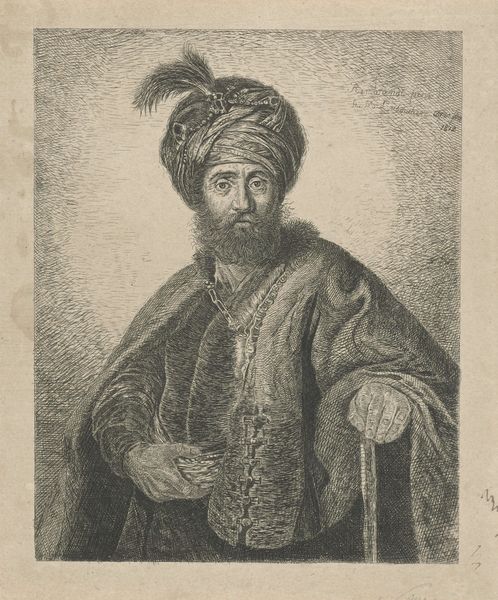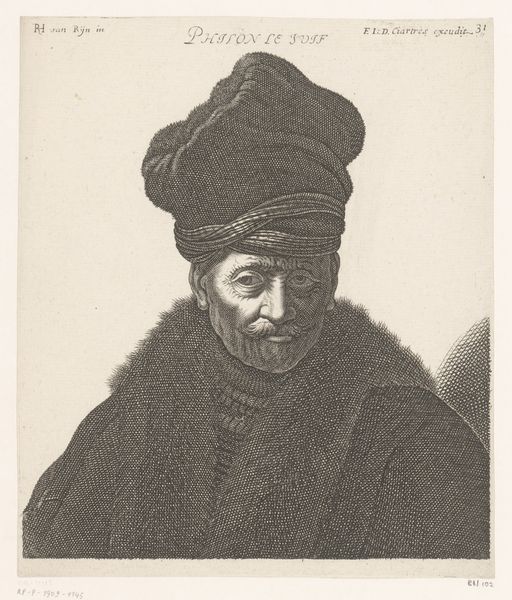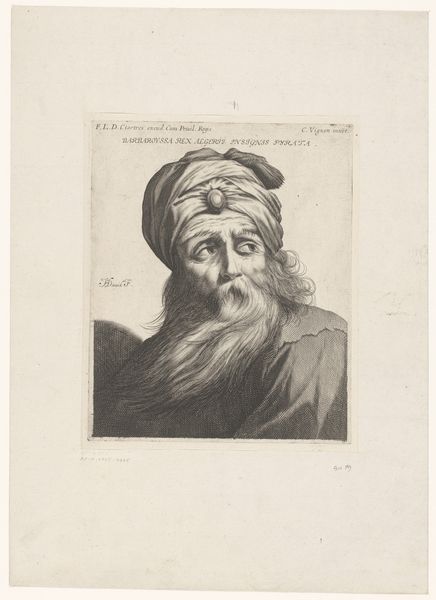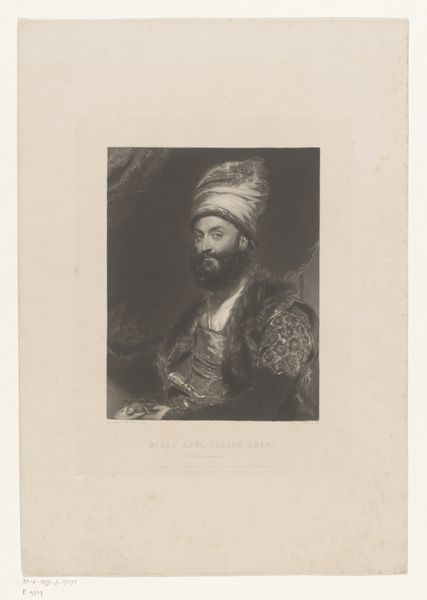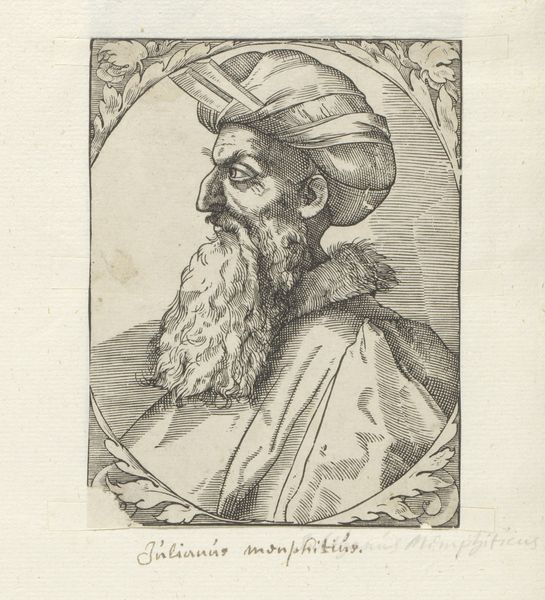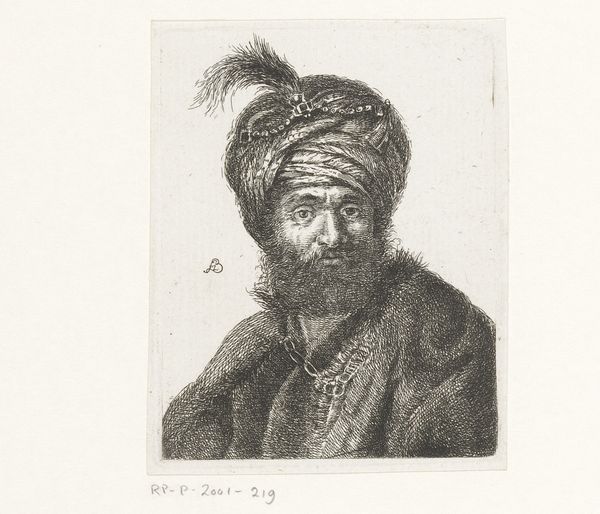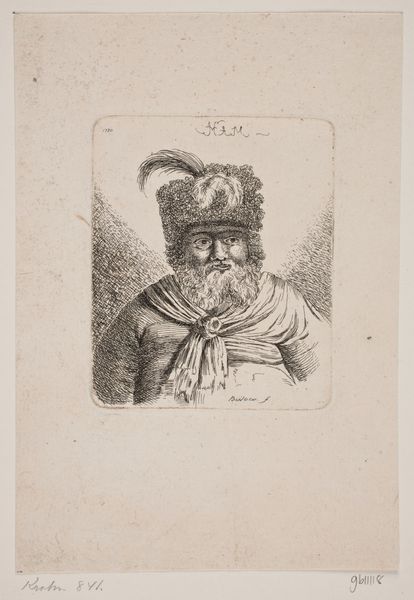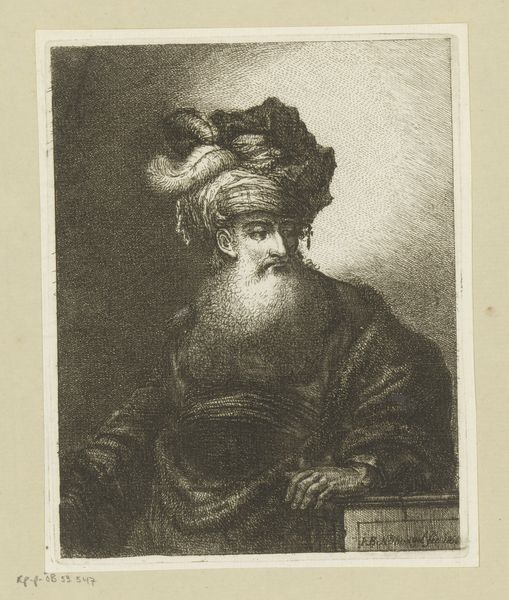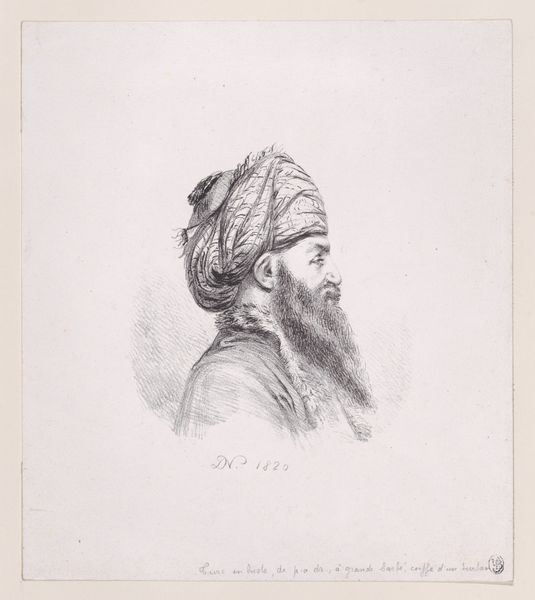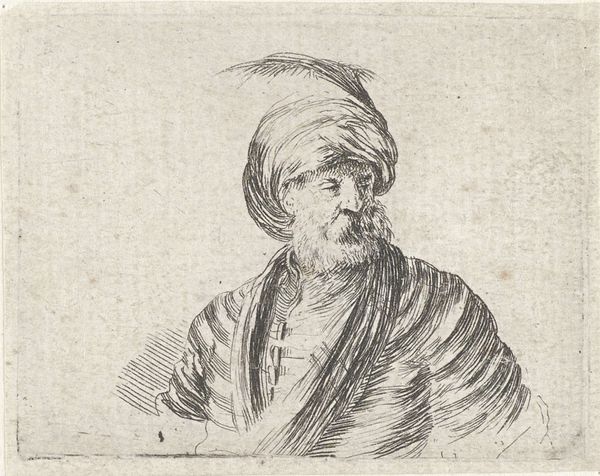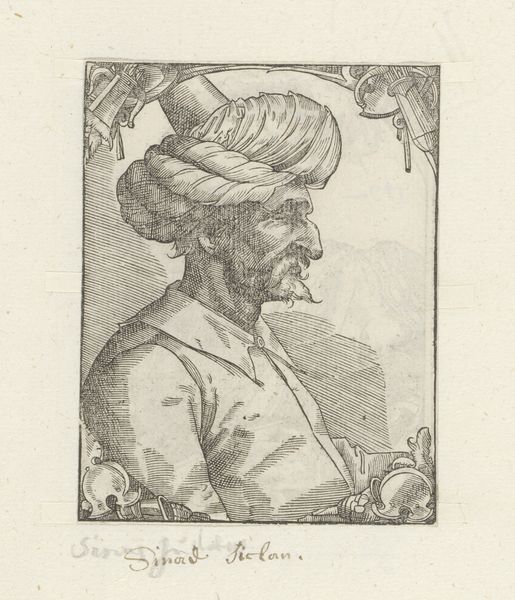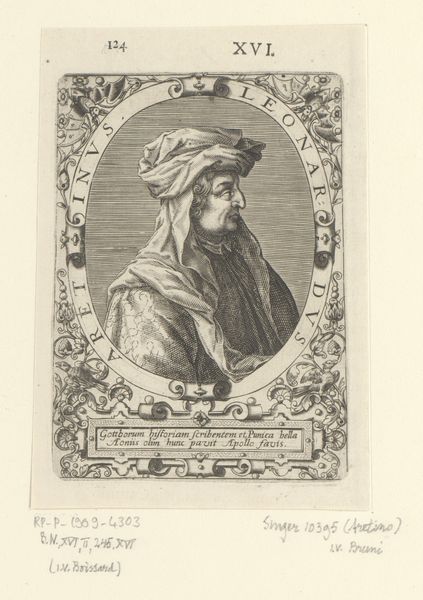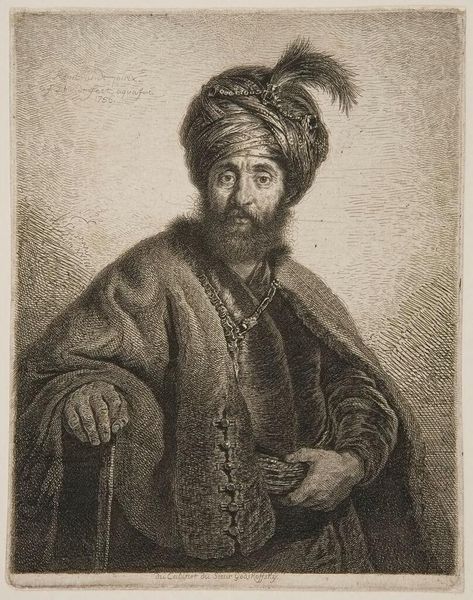
print, engraving
#
portrait
# print
#
figuration
#
islamic-art
#
history-painting
#
engraving
#
realism
Dimensions: height 216 mm, width 180 mm
Copyright: Rijks Museum: Open Domain
Curator: This print, made sometime between 1615 and 1647, offers us a detailed rendering of "Portret van Süleyman I." Editor: It strikes me immediately with its severe elegance. The lines are so precise, almost cold, yet there's a certain imposing grandeur. Curator: Indeed. Look closely at the line work. Notice how the engraver, presumably Jerôme David, used varied hatching techniques to create the illusion of depth and texture. The folds in Süleyman's turban and the fur trim of his robe are meticulously rendered. Editor: Speaking of Süleyman, what an intensely political statement to create and circulate this portrait. This wasn't just an image; it was a declaration of power and, perhaps, a subtle commentary on the complex relationship between Europe and the Ottoman Empire. To depict Süleyman in such regal attire… Curator: Exactly! Observe how the formal composition—the three-quarter view, the placement of the inscription above his head—all work to elevate him. Semiotics teaches us to look for those clues to discern the artist's intentions, or rather, the intent behind commissioning the work. What narrative are we, the viewers, intended to construct? Editor: The narratives spun around powerful figures like Süleyman are often full of projections from very specific European viewpoints. Considering the social context, this print wasn’t just documenting a ruler, it was shaping an understanding—or misunderstanding—of an entire culture. The jewel on his turban—how does that contribute to constructing him as an 'other'? Curator: It reinforces his status, contributing to a visual language readily understood in the 17th century. Think of the conventions of portraiture at the time—the composition is classic, but the subject subverts expectations. It disrupts a familiar visual formula, doesn't it? Editor: Disrupts, yet contains, right? It’s like framing a foreign ruler within European aesthetics to somewhat ‘civilize’ him for the European gaze, subtly reinforcing a sense of European superiority. Curator: It highlights how the artist uses the print medium not merely as reproduction but as interpretation—a controlled demonstration of power, image, and perception. Editor: Ultimately, by carefully examining the context and composition, we recognize how this isn’t merely a portrait, but a window into a complicated and culturally charged moment in history. Curator: A perspective certainly sharpened by our dialogue today!
Comments
No comments
Be the first to comment and join the conversation on the ultimate creative platform.
